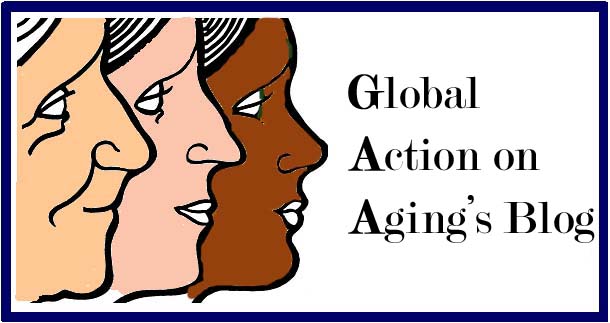
Michael Sidibé, UNAIDS Executive Director
Most people have heard about UNAIDS. But who are they? What do they actually do? How do they operate? Do they make a difference?
When and How?
In the early days of HIVAIDS’ infection in many parts of the world, the UN Economic and Social Council launched UNAIDS to respond worldwide in January 1996. A Programme Coordinating Board with representatives of 22 governments from all geographic regions and of several Cosponsors led the response. They include UNHCR (The UN Refugee Agency), UNICEF (United Nations Children's Fund), WFP (World Food Programme), UNDP (United Nations Development Programme), UNFPA (United Nations Population Fund), UNODC (United Nations Office on Drugs and Crime), ILO (The International Labour Organization), UNESCO (United Nations Educational, Scientific and Cultural Organization), WHO (World Health Organization and The World Bank.
There are also five more seats without voting rights reserved for a balanced mix of non-governmental organizations, including people living with the virus. This makes UNAIDS the only UN institution to have non-governmental organization participation on its governing board.
The UNAIDS headquarters is in Genève, Switzerland. There are 7 regional offices and over 80 countries around the world. The first Executive Director was Peter Piot. On 1 January 2009 Michael Sidibé became the new first Executive Director.
Every so often UNAIDS organizes High Level meetings to evaluate the work that has been done in the different regions, countries and research groups. At these meetings new goals are agreed upon and organized. These can be both small and big milestones. In New York City at the 2011 High Level Meeting on AIDS, the governing members adopted a new Political Declaration adopted a declaration and included new commitments and challenging new targets which UNAIDS hopes will re-invigorate the AIDS response.
Funding
Voluntary contributions from governments, foundations, corporations, private groups and individuals support UNIAIDS. The USA, the Netherlands, Norway, Japan, the United Kingdom and Sweden are the largest donors. UNAIDS also receives funds from 25 other countries. The global economy always affects HIV/AIDS funding, prevention and treatment. For instance, during the 2008 – 2009 global economic crises, donor spending decreased in low and middle-income countries. UNAIDS reported in 2009 that the economic downturn has negatively impacted AIDS programs and the situation continues to get worse.
UNAIDS Goals and Achievements
The UNAIDS’ mission is to guide, strengthen and support worldwide efforts to fight the HIV/AIDS epidemic. It aims to prevent the spread of HIV, provide care and support for those who are infected and affected by the disease, reduce the vulnerability of individuals and communities to HIV/AIDS and ease the socioeconomic and human impact of the epidemic.
Since the start of UNAIDS millions of lives have been saved. UNAIDS has assisted countries to achieve results. For example, 3.3 million people can now access HIV treatment through UNAIDS. Antiretroviral therapy can prevent new HIV infections, preserve health, and lengthen life expectancy. Starting HIV treatment early in its infection, helps prevent HIV transmission. This shows the importance of access to HIV treatment.
UNAIDS estimates 7,000 newly HIV-infected people each day. Preventing the spread of HIV remains one of UNAIDS’ main goals through national, regional and international approaches to stop its deadly progress.
Year 2015
2015 will be a very important year for UNAIDS. Here are the goals that UNAIDS has set up for 2015:
* Universal access to antiretroviral therapy for people living with HIV who are eligible for treatment; sexual transmission of HIV reduced by half, including among young people, men who have sex with men and transmission in the context of sex work.
* TB deaths among people living with HIV reduced by half.
* HIV-specific needs of women and girls are addressed in at least half of all national HIV responses.
To read all of the goals for 2015 please visit:
There are some potential blocks to achieving these goals. The biggest one is money. International assistance for the AIDS response dropped in 2011 for the first time since 2001. During the 2011 High Level Meeting on AIDS states agreed to increase AIDS- related spending to reach between US$ 22 billion and US$24 billion in low- and middle- income countries by 2015.
What else could be done?
The work UNAIDS is doing is very important. There are a few things, I think, must be improved. First, their website is accessible in four different languages, and those are, English, French, Spanish and Russian. This means that the website is available in four out of the six official UN languages. Why have they chosen not to add Mandarin and Arabic? Both are official UN languages. If Global Action on Aging can manage to provide articles in all official UN languages, why can’t the richly funded UNAIDS do the same?
Second, UNAIDS provides detailed research from all over the world, about all regions and countries. But the UNAIDS lacks information about older adults and seniors living with HIV and AIDS. UNAIDS speaks about prevention for different groups, but it never mentions the aging population in any country. Its statistics are not very clear when it reaches the higher ages. UNAIDS provides data for adults aged 15 to 49 years, or children aged 0 – 14 living with HIV. HIV/AIDS and older adults/seniors is definitely a growing public health problem (and a personal tragedy) that deserves more attention.
UNAIDS has accomplished a lot. To reach its final goal, “Zero New Infections, Zero AIDS-related Deaths and Zero Discrimination,” its work must continue. We must make certain make all countries continue to recognize the importance of fighting the HIV epidemic. The population must recognize the importance of fighting the HIV epidemic. We have come very far since the beginning of HIV/AIDS. We are not yet done. We must not give up the fight.


It is very interesting about UNAIDS.
ReplyDeletePhan